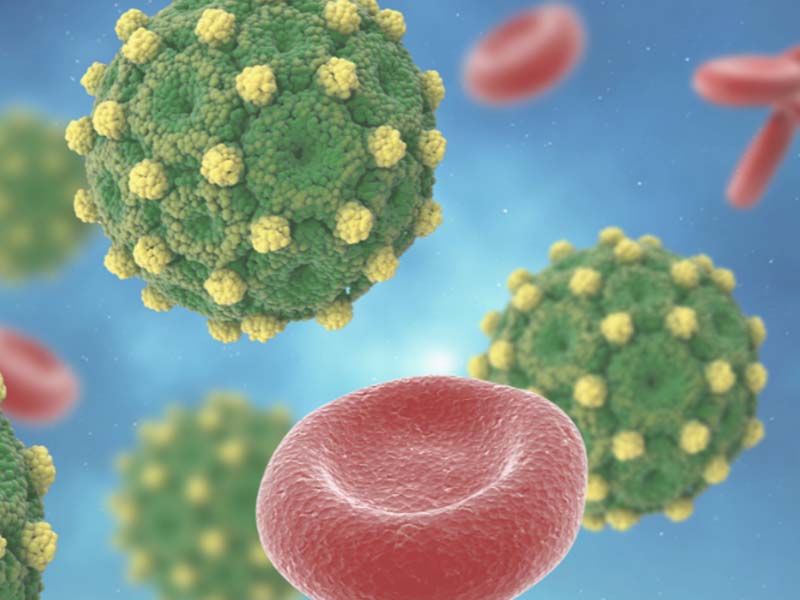Bloodborne pathogens (BBPs) are infectious microorganisms found in human blood that can cause diseases in humans. These pathogens include, but are not limited to, viruses like hepatitis B (HBV), hepatitis C (HCV), and human immunodeficiency virus (HIV). Healthcare workers are at a higher risk of exposure to these pathogens due to the nature of their work, which often involves direct contact with blood and other potentially infectious materials. Understanding the most common risks associated with BBPs is crucial for healthcare professionals to implement effective safety protocols and minimize their exposure.
The Nature of Bloodborne Pathogens
Bloodborne pathogens are primarily transmitted through direct contact with infected blood, body fluids, or contaminated surfaces. These pathogens can survive outside the human body for varying lengths of time, depending on the environment. For instance, HBV can survive on surfaces for up to a week, while HIV is less stable outside the body. This persistence increases the risk of exposure for healthcare workers, who may come into contact with these pathogens during various procedures and tasks.
Common Risks of Exposure in Healthcare Settings
Needle Stick Injuries
Needle stick injuries are one of the most prevalent risks healthcare workers face when dealing with bloodborne pathogens. These injuries can occur when needles or other sharp instruments penetrate the skin, potentially injecting blood from an infected patient into the worker’s bloodstream. According to the Centers for Disease Control and Prevention (CDC), approximately 385,000 needle stick injuries occur each year among U.S. healthcare workers. These injuries often happen during the disposal of needles, recapping of needles, or handling of sharp instruments.
Cuts and Abrasions
Cuts and abrasions can also expose healthcare workers to bloodborne pathogens. These injuries may occur when handling sharp objects or during procedures that require direct contact with blood. Even minor cuts can pose a risk if the worker comes into contact with infected blood. The risk of exposure increases in high-pressure situations, such as emergency rooms or during surgical procedures, where quick movements and less attention to safety protocols can lead to accidents.
Exposure to Contaminated Surfaces
Contaminated surfaces in healthcare settings, such as operating tables, medical equipment, and countertops, pose a significant risk for the transmission of bloodborne pathogens. Healthcare workers may unknowingly touch contaminated surfaces and subsequently touch their eyes, nose, or mouth, allowing pathogens to enter their bodies. Regular cleaning and disinfection of surfaces are essential to mitigate this risk.
Inadequate Personal Protective Equipment (PPE)
Personal protective equipment (PPE) is vital for protecting healthcare workers from exposure to bloodborne pathogens. Inadequate or improper use of PPE, such as gloves, masks, gowns, and face shields, can significantly increase the risk of exposure. For example, if gloves are torn or not worn during procedures involving blood, the likelihood of contact with infectious materials rises. Additionally, neglecting to wear face shields or masks during procedures that may produce splashes or aerosols can expose healthcare workers to potentially infectious fluids.
Patient Care Procedures
Various patient care procedures, such as venipuncture, catheterization, and wound care, carry inherent risks of exposure to bloodborne pathogens. These procedures often involve direct contact with blood, making it essential for healthcare workers to adhere to strict safety protocols. Additionally, procedures involving high-risk patients, such as those with known infectious diseases, amplify the risk for healthcare workers.
Infection Control Breaches
Infection control breaches can occur when healthcare facilities do not follow established protocols for handling blood and other potentially infectious materials. This can include failing to properly sterilize equipment, not adhering to hand hygiene practices, or not following standard precautions. Such breaches can lead to increased exposure to bloodborne pathogens for healthcare workers, making it crucial for facilities to maintain rigorous infection control measures.
Exposure During Emergency Situations
In emergency situations, healthcare workers often work quickly and under pressure, increasing the likelihood of mistakes. The rush to provide care can lead to lapses in safety protocols, such as forgetting to wear gloves or not properly disposing of sharp objects. These hurried circumstances heighten the risk of exposure to bloodborne pathogens.
Prevention Strategies
To minimize the risks associated with bloodborne pathogens, healthcare workers and facilities must adopt comprehensive prevention strategies. Here are some key measures
Education and Training
Regular training programs on bloodborne pathogens, safety protocols, and proper use of PPE are essential. Education helps healthcare workers understand the risks they face and equips them with the knowledge to implement safe practices in their daily work.
Proper Use of Personal Protective Equipment
Ensuring that healthcare workers have access to appropriate PPE and are trained in its proper use is crucial. PPE should be worn whenever there is a risk of exposure to blood or potentially infectious materials. Employers should regularly check the integrity of PPE and replace it as needed.
Safe Needle Practices
Implementing safe needle practices is critical for preventing needle stick injuries. This includes using safety-engineered devices, avoiding recapping needles, and providing accessible disposal containers for sharps. Additionally, healthcare workers should be encouraged to report any needle stick injuries immediately, allowing for prompt medical evaluation and follow-up.
Routine Cleaning and Disinfection
Regular cleaning and disinfection of surfaces and equipment in healthcare settings are vital for reducing the risk of infection. Establishing a routine cleaning schedule and using appropriate disinfectants can help ensure that potentially contaminated surfaces are maintained.
Adhering to Standard Precautions
Healthcare workers should always adhere to standard precautions, which include practices designed to prevent the transmission of infections. This includes proper hand hygiene, use of gloves when handling blood or body fluids, and safe handling of contaminated items.
Encouraging Reporting and Feedback
Establishing a culture of safety within healthcare facilities encourages workers to report any incidents or near-misses related to exposure to bloodborne pathogens. Feedback from these reports can help identify areas for improvement in safety protocols and training programs.
Conclusion
Understanding the most common risks of exposure to bloodborne pathogens is crucial for healthcare workers. By recognizing the hazards associated with their profession and implementing effective prevention strategies, healthcare workers can significantly reduce their risk of exposure. Continuous education, proper use of PPE, and adherence to safety protocols are essential components in safeguarding healthcare workers against bloodborne pathogens. As the healthcare landscape evolves, it is imperative to remain vigilant and proactive in addressing these risks to ensure the safety and health of those who dedicate their lives to caring for others.


